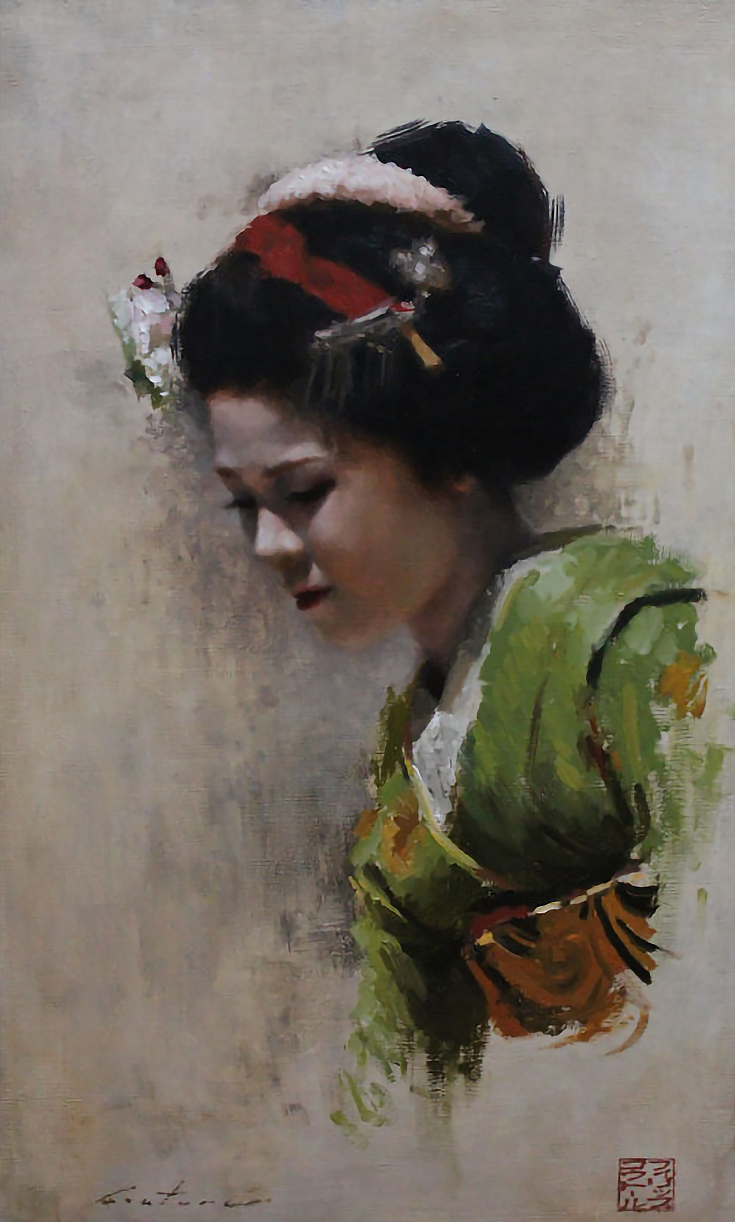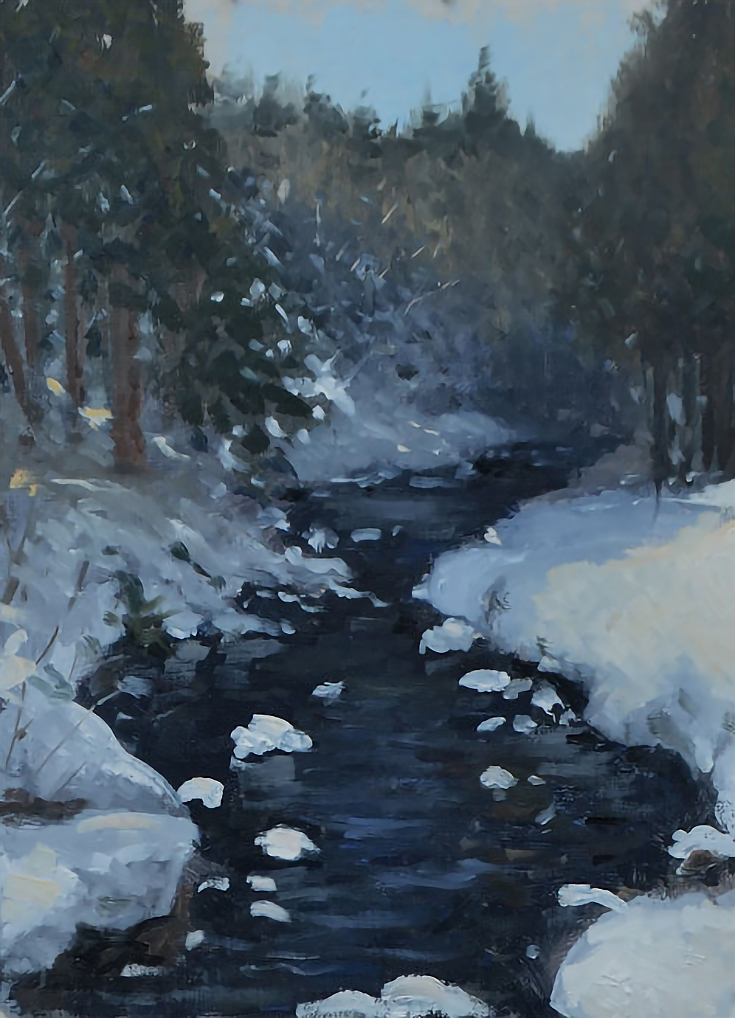
In 2005, while working as a Veterinary Tech Assistant, he began offering drawings and paintings of clients’ pets and later sold his art in local art galleries.
Today he resides in Kyoto, Japan (with his wife) and sells his art in the ancient capital.
Alyice: Why did you choose oil paints?
Phil: In my early years, I originally started out painting with acrylic paint and I can remember having to sacrifice turning the fan off in my hot Floridian house, just to keep the paint from drying too soon. . . before I could blend and manipulate it. Eventually, I discovered and tried oil paints and I realized that not only did it allow for more time to work and rework the paint, it had an enormous textural and layering range that can’t be attained with any other medium.
Alyice: What do you wish you knew about oils before you got started?
Phil: How it is not as difficult as it seems.
I always had a notion of oil paint a superior medium and very difficult to work with. It always intimidated me and I wish I had an instructor in my early years that could have shown me the best way to approach oil painting. Once you have a good working method, it’s a lot of fun to play with.
Alyice: What is the best part about working with oils?
Phil: The best part about working with oils is the range. It has the ability to go from very thin, watercolor-like in its application to thick, palette knife layering to everywhere in between. It is a medium that requires patience when working quickly, like with wet on wet. But it also allows me to work in layers over a long period of time. Oil paint is great for experimentation and, when done right, can yield elegant results.
Alyice: How do you choose the subject of your painting?
Phil: My inspiration comes from traveling the world and experiencing new cultures and new scenery. Whatever stands out from the norm and isn’t something I would see every day.
I think the most important question I have to answer is: Is this interesting?
First it has to interest and inspire me, then I am compelled to create something with quality and mystery that translates my inspiration to the viewer. My subjects have to have longevity in their presentation. I want to present the figures, still lifes, and landscapes I paint as timeless and something special.
Alyice: What is your creative process like?
Phil: My creative process varies from spontaneous paintings based on life to well-thought and planned studio pieces. Most of the time, I have either drawn or painted the subject from life, but if that is not possible, I will take many photographs to use for reference. I’ll make some preliminary studies in pencil or paint and then start working on the actual piece.
For landscape and still-life paintings, the approach is completely different and spontaneity is my goal. Working from life, with time constraints, forces you to work efficiently and effectively and only put down what is absolutely necessary to make the painting successful. I enjoy both approaches as each one yields different results.
Alyice: How has your style changed over the years?
Phil: I feel my style has changed drastically over the years.
Originally influenced by the 19th century impressionists and post impressionists such as Monet, Degas, Toulouse Lautrec and Van Gogh, my approach to painting was very random and loose.
After studying the realist masters such as Velasquez, Van Dyck, John Singer Sargent, John Waterhouse, and Ilya Repin I began to get very focused and meticulous in my brushstrokes.
I’ve realized over the years that I enjoy both results. I like seeing well executed and well defined forms juxtaposed with loose, haphazard chaos.
Alyice: Do you ever experience creative blocks?
Phil: Whenever I feel unmotivated or trapped creatively, I like to play a musical instrument. Music and art are so similar, but each one requires a different kind of attention and mindset.
I’ve owned and tried my hand at various instruments over the years including the violin, sitar, mandolin, ukulele, sarangi, and guitar. Writing songs on the guitar or even just jamming on it seems to give the visual side of my brain a break and allow me to return to painting and drawing with a fresh outlook.
Alyice: What do you believe is the key element in creating a good oil painting?
Phil: For representational oil painting or any painting for that matter, the key element is execution. If it lacks in execution, meaning if it lacks in all of the elements that make great paintings great, such as design, composition, line, color, and value, then it will fall short of being aesthetically pleasing to look at for years to come.
Without the tools and skills to manipulate oil paint, an artist will fall short in conveying whatever it is they want to convey. Visual art is after all, a visual language and as with any language, it is important to be able to speak well. This is why I am always trying to improve my craft. I will never attain any kind of “perfection” but as long as I am always challenging myself and never stagnating I know I can only get better.
Alyice: What is the worst thing you’ve seen someone do to an oil painting, and what do you wish you could’ve told that artist?
Phil: One of the most common things I’ve seen with people unfamiliar to oil painting is over working the paint and turning it into mud.
“Mud” occurs when there are no color relationships, temperature relationships, and/or the values are just way off. In short, a muddy looking, overworked painting occurs when an artist “guesses” at where to put the paint and just hopes it will look good and continues trying to make it work until it’s decided it is finished. I would tell that artist to keep stepping back, look at the painting from a distance, and compare the colors, values, and form of the their subject to their painting.
You can learn more about Phil’s work at philcouture.blogspot.jp or his etsy shop.
This post may contain affiliate links.



